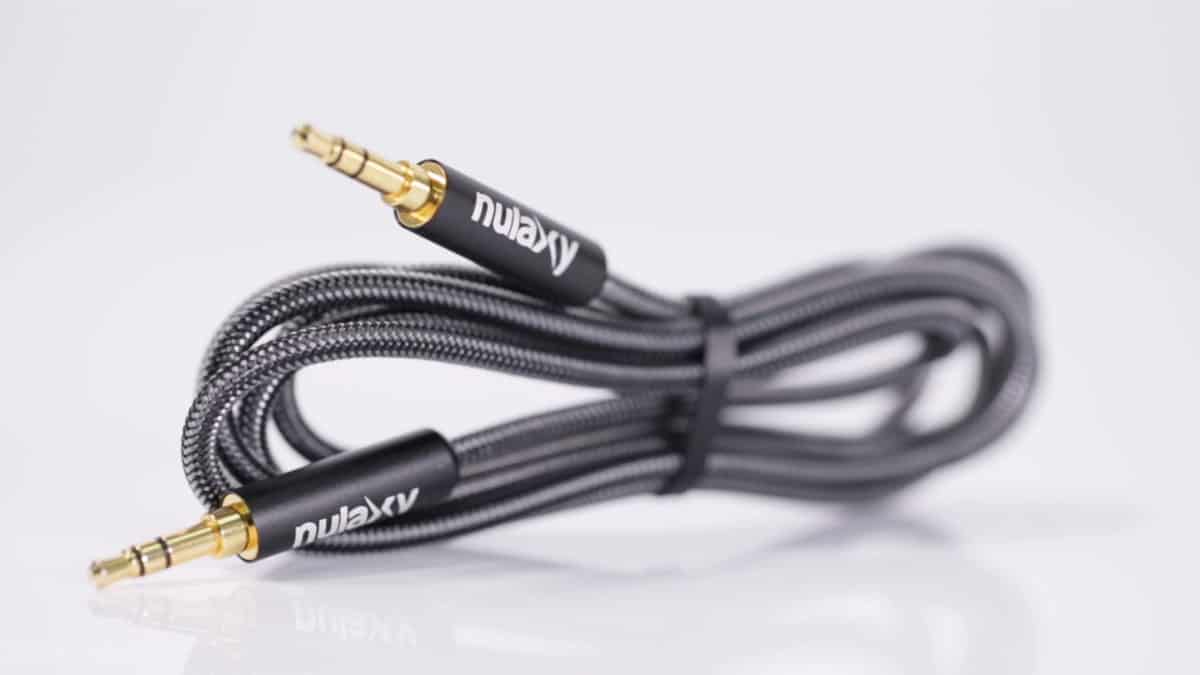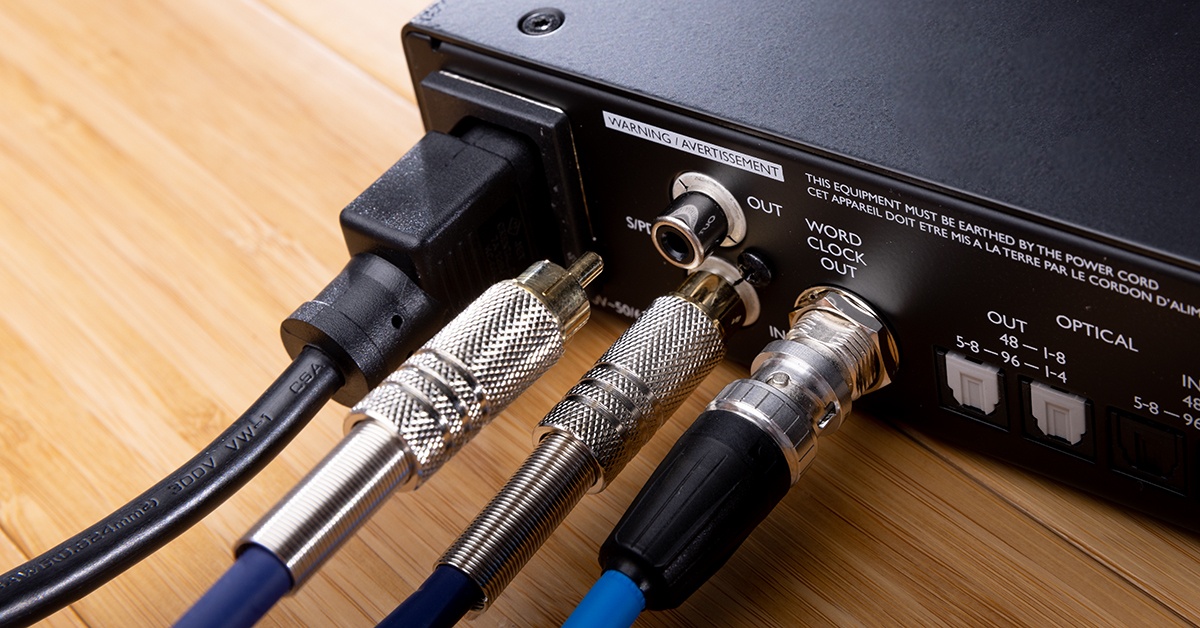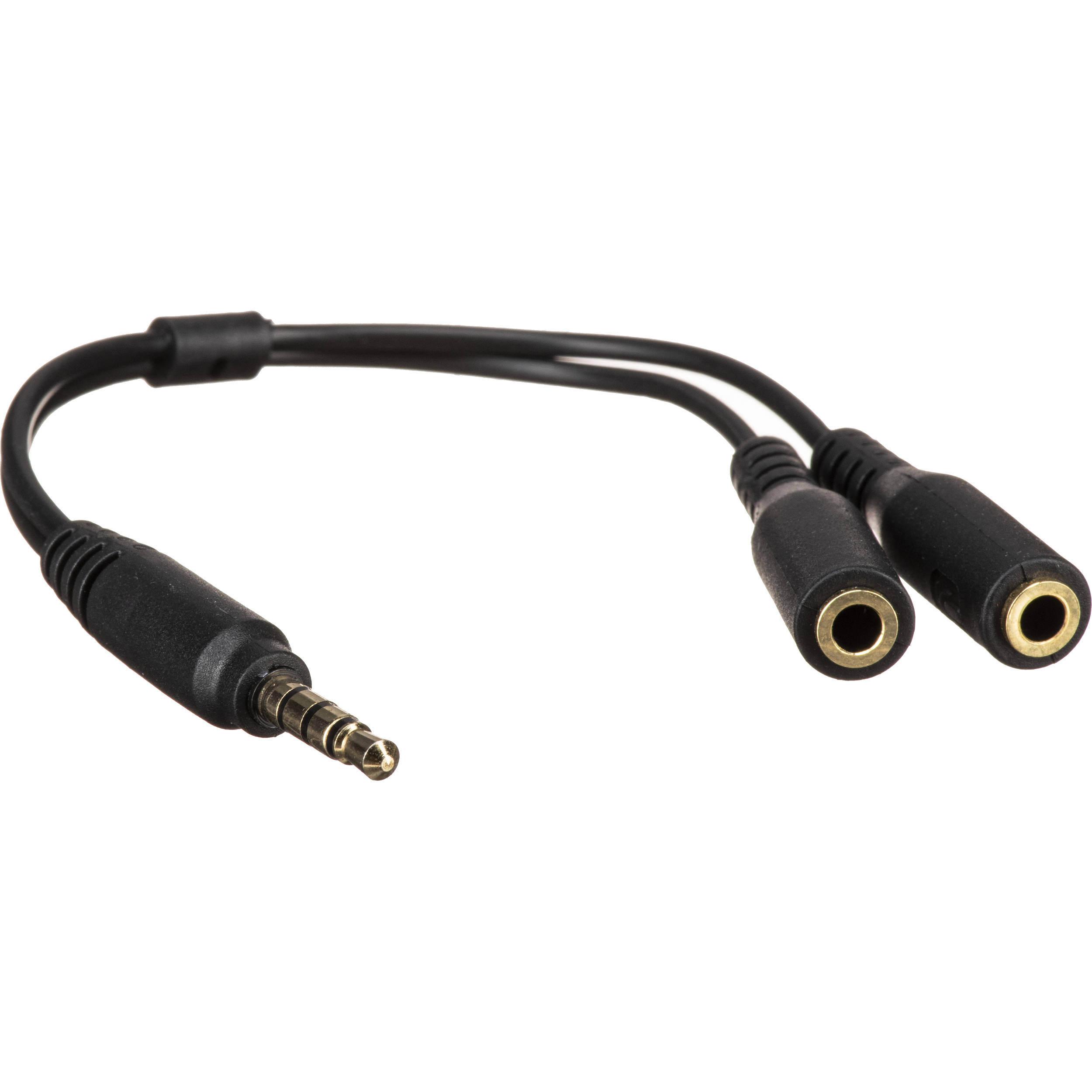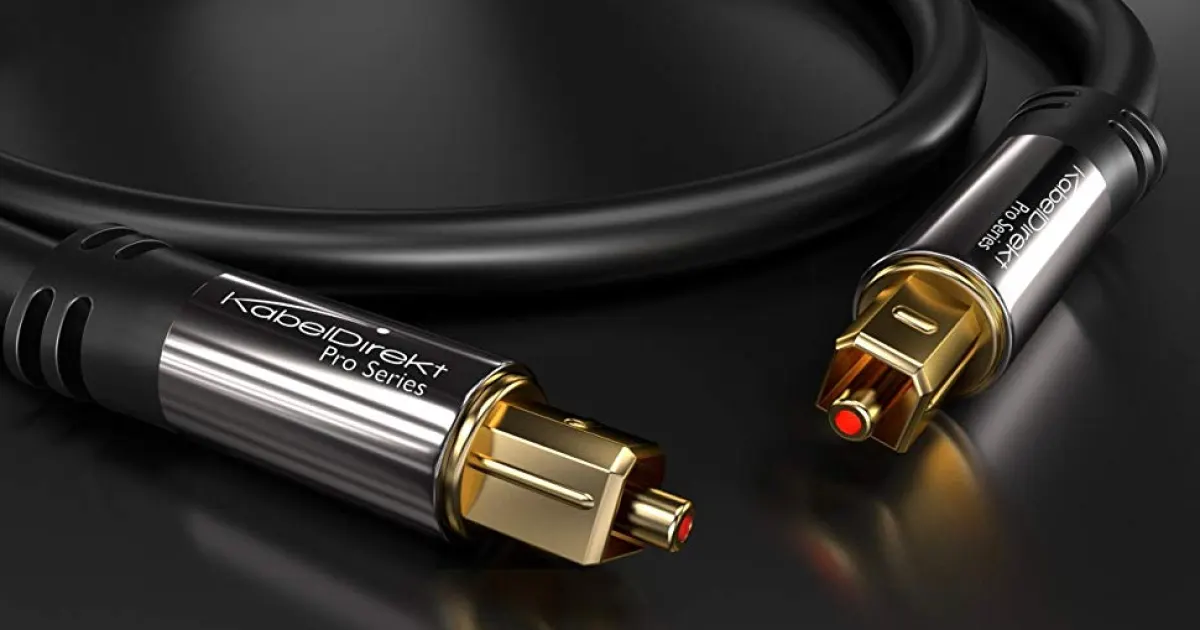Home>Production & Technology>Audio Cable>When To Use A Balanced Audio Cable


Audio Cable
When To Use A Balanced Audio Cable
Published: December 19, 2023
Learn when to use a balanced audio cable for optimal sound quality. Discover the benefits and how to identify when this type of cable is necessary.
(Many of the links in this article redirect to a specific reviewed product. Your purchase of these products through affiliate links helps to generate commission for AudioLover.com, at no extra cost. Learn more)
Table of Contents
Introduction
Welcome to the world of audio cables, where the right choice can make all the difference in the quality of your sound. Whether you’re a music enthusiast, a professional musician, or an audio engineer, understanding the different types of cables and knowing when to use them is essential for achieving optimal audio performance.
In this article, we will be exploring the world of balanced audio cables, their benefits, and the situations in which they are necessary. Balanced audio cables are widely regarded as the gold standard in professional audio settings due to their superior noise rejection capabilities and ability to deliver clean and clear audio signals.
Before delving into the specifics of balanced audio cables, it’s important to have a basic understanding of how audio signals are transmitted. In an unbalanced audio cable, the audio signal is carried through a single conductor and is susceptible to interference and noise. In contrast, balanced audio cables use two conductors, along with a third conductor known as the ground, to effectively eliminate interference and improve signal quality.
Now that you have a general understanding of the purpose of balanced audio cables, let’s dive deeper into their benefits and explore the situations in which their use is necessary. Whether you’re recording in a studio, playing live on stage, or connecting audio equipment in a professional setting, understanding when to use balanced audio cables is crucial for achieving the best possible sound quality.
Understanding Balanced Audio Cables
Before we explore the benefits and applications of balanced audio cables, let’s first understand how they work. Balanced audio cables consist of three main components: two signal-carrying conductors and a ground conductor. The two signal conductors, often referred to as the “positive” and “negative” or “hot” and “cold” conductors, carry the audio signal with equal impedance.
One of the key features of balanced audio cables is that the audio signal is transmitted differentially. This means that the audio signal is sent down both the positive and negative conductors, but with an inverted polarity on the negative conductor. This configuration allows the receiving equipment to reconstruct the original audio signal by combining the two signals, effectively canceling out any noise or interference that may have been picked up along the way.
The ground conductor in a balanced audio cable serves as a reference point for the audio signal and helps to ensure proper grounding and shielding. It provides a pathway for any unwanted noise or interference to be safely diverted away from the audio signal, resulting in a cleaner and more reliable transmission.
It’s worth noting that balanced audio cables come in different connector types, such as XLR (used mainly in professional audio applications), TRS (commonly found in studio equipment and headphones), and some RCA connectors (generally used for consumer audio devices). Regardless of the connector type, the underlying principle and benefits of balanced audio cables remain the same.
Now that you have a basic understanding of how balanced audio cables work, let’s explore the advantages they offer over unbalanced cables in the next section.
Benefits of Using Balanced Audio Cables
Using balanced audio cables provides a range of benefits that contribute to improved audio quality and a more professional audio experience. Let’s take a closer look at some of the key advantages of using balanced audio cables:
- Noise Rejection: One of the primary benefits of balanced audio cables is their exceptional noise rejection capabilities. The balanced transmission of the audio signal, combined with the inverted polarity on the negative conductor, helps cancel out any external interference or noise picked up along the cable. This results in a cleaner, clearer audio signal, free from unwanted disturbances.
- Long Cable Runs: Balanced audio cables are particularly well-suited for long cable runs. The balanced transmission method helps maintain signal integrity over longer distances, minimizing signal degradation and ensuring consistent audio quality. This makes them ideal for professional audio applications like live sound reinforcement or studio recording, where long cable runs are often necessary.
- Higher Signal-to-Noise Ratio: By effectively rejecting noise and interference, balanced audio cables provide a higher signal-to-noise ratio compared to unbalanced cables. This means that the desired audio signal is more pronounced and distinguishable from any background noise, resulting in enhanced audio fidelity and detail.
- Improved Common Mode Rejection: Balanced audio cables also offer improved common mode rejection, which refers to their ability to cancel out any noise or interference that is common to both the positive and negative conductors. This ensures that any noise or interference that affects both conductors equally is rejected, further enhancing the overall sound quality.
- Flexibility and Versatility: Balanced audio cables can be used in a wide range of professional audio applications. From connecting microphones and instruments to audio interfaces and mixing consoles, balanced cables offer compatibility with various audio equipment. Their versatility makes them a popular choice among musicians, sound engineers, and recording professionals.
By utilizing balanced audio cables, you can enjoy clearer, cleaner, and more reliable audio signals, ensuring an exceptional audio experience in various settings.
Situations When Balanced Audio Cables are Necessary
While balanced audio cables offer numerous benefits, there are specific situations where their use is particularly necessary to ensure optimal performance. Let’s explore some of these situations:
- Professional Studio Recording: In a professional recording studio, where capturing pristine audio quality is crucial, balanced audio cables are a must. They help maintain the integrity of the audio signal throughout the recording chain, from microphones to preamps, and from outboard gear to audio interfaces. By minimizing interference and noise, balanced cables preserve the fidelity of the recorded audio, resulting in high-quality recordings.
- Live Sound Reinforcement: When amplifying sound for live performances, balanced audio cables are essential. Whether you’re connecting microphones, instruments, or speakers, using balanced cables ensures a clean and noise-free transfer of audio signals. This helps prevent unwanted buzzes, hums, and interference that can be picked up in a live environment.
- Broadcasting and Audio for Video: In professional broadcasting and video production settings, balanced audio cables are critical for delivering clear and high-quality sound. Whether it’s capturing dialogue, recording voiceovers, or processing audio for video, balanced cables help eliminate potential noise and interference, ensuring that the audio remains pristine and free from distractions.
- Long Cable Runs: When running audio signals over extended distances, such as in large venues or multi-room setups, using balanced audio cables becomes essential. Unbalanced cables, especially over long runs, are susceptible to noise and signal degradation. Balanced cables, on the other hand, are designed to minimize these issues, ensuring consistent audio quality throughout the extended cable length.
- Connecting Professional Audio Equipment: When connecting professional audio equipment, such as studio monitors, audio interfaces, mixing consoles, or outboard gear, using balanced audio cables is highly recommended. This helps maintain the integrity of the audio signal, reducing the chances of interference and ensuring accurate audio reproduction.
In these situations, using balanced audio cables is necessary to achieve the best sound quality, minimize noise, and maintain the integrity of the audio signal throughout the audio chain.
When to Use Unbalanced Audio Cables Instead
While balanced audio cables are the preferred choice in many professional audio scenarios, there are situations where unbalanced audio cables can be used effectively. Here are a few examples:
- Consumer Audio Devices: Unbalanced audio cables are commonly used with consumer audio devices such as home speakers, headphones, portable music players, and laptops. These devices are designed to work with unbalanced connections, and using balanced cables with them may not provide any noticeable improvement in audio quality.
- Short Cable Runs: For short cable runs, where the distance between audio devices is minimal, unbalanced cables can be used without significant signal degradation. The potential benefits of balanced cables, such as noise rejection over long distances, may not be necessary or noticeable in these scenarios.
- Budget Constraints: Unbalanced audio cables tend to be more affordable compared to balanced cables. If you’re on a tight budget and the audio application doesn’t require the benefits of balanced cables, using unbalanced cables can be a cost-effective solution.
- Simplified Setup: Unbalanced connections are often simpler to set up and troubleshoot compared to balanced connections. If you’re in a situation where simplicity and convenience are prioritized over the potential benefits of balanced cables, using unbalanced cables can be a practical choice.
- Vintage Audio Equipment: Some older audio equipment may only have unbalanced inputs and outputs. In these cases, using unbalanced cables is necessary unless you have external adapters or converters that can enable balanced connections.
It’s important to note that while unbalanced cables have their uses, they are more susceptible to noise and interference compared to balanced cables. Therefore, if you’re working in a professional audio environment where signal quality is of utmost importance, it’s recommended to use balanced cables whenever possible.
Ultimately, the decision to use balanced or unbalanced cables depends on the specific requirements of your audio setup and the level of audio quality you’re aiming to achieve.
Tips for Properly Using Balanced Audio Cables
To ensure optimal performance and longevity of your balanced audio cables, it’s important to follow some best practices. Here are a few tips for properly using balanced audio cables:
- Quality Cables: Invest in high-quality balanced audio cables from reputable brands. High-quality cables are built to withstand regular use and offer better shielding against interference, resulting in improved audio quality and longevity.
- Secure Connections: Ensure that the connectors are securely plugged into the appropriate input and output jacks. Loose connections can introduce noise or cause signal loss, compromising the audio quality.
- Avoid Excessive Cable Lengths: While balanced cables are designed to maintain signal integrity over long distances, it’s best to keep cable lengths as short as possible. Excessive cable lengths can increase the risk of signal degradation and introduce unwanted noise or interference.
- Proper Cable Management: Organize and manage your cables properly to minimize the chances of unwanted noise caused by cable interference. Avoid running audio cables parallel to power cables or other sources of electromagnetic interference.
- Use Balanced Connections Throughout the Signal Chain: To reap the benefits of balanced audio cables, ensure that all components in the audio signal chain support balanced connections. From microphones to mixers, amplifiers to speakers, using balanced connections throughout the signal chain helps maintain consistent audio quality and noise rejection.
- Check Equipment Compatibility: When using balanced audio cables with different audio devices or equipment, ensure that they are compatible with balanced connections. Some devices may only support unbalanced connections or require adapters or converters for balanced connections.
- Regularly Inspect and Maintain Cables: Periodically inspect your balanced audio cables for any signs of wear and tear, such as frayed cables or loose connectors. Replace any damaged cables promptly to prevent signal loss or reduced audio quality.
By following these tips, you can ensure that your balanced audio cables perform optimally and provide a reliable and high-quality audio connection for your professional audio applications.
Conclusion
Balanced audio cables are a key component in achieving high-quality audio signals in professional audio settings. Their exceptional noise rejection capabilities, ability to maintain signal integrity over long distances, and higher signal-to-noise ratio make them the preferred choice for studios, live sound reinforcement, broadcasting, and connecting professional audio equipment.
By understanding the benefits of balanced audio cables and knowing when to use them, you can elevate your audio experience and ensure optimal sound quality. In situations where interference, noise, or long cable runs are common, balanced audio cables excel in delivering clean and clear audio signals.
However, it’s important to note that unbalanced audio cables still have their place for consumer audio devices, short cable runs, or budget-conscious setups. As with any audio setup, choosing the right cables for your specific needs is vital.
Remember to invest in quality balanced audio cables, properly secure connections, manage cable lengths, and regularly inspect and maintain your cables for optimal performance. By following these tips, you can ensure a reliable and high-quality audio connection throughout your professional audio workflow.
So, whether you’re recording in the studio, performing live on stage, or connecting audio equipment in a professional setting, understanding the power and versatility of balanced audio cables will help you achieve the best possible sound quality and enhance your overall audio experience.











